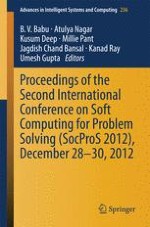The present book is based on the research papers presented in the International Conference on Soft Computing for Problem Solving (SocProS 2012), held at JK Lakshmipat University, Jaipur, India. This book provides the latest developments in the area of soft computing and covers a variety of topics, including mathematical modeling, image processing, optimization, swarm intelligence, evolutionary algorithms, fuzzy logic, neural networks, forecasting, data mining, etc. The objective of the book is to familiarize the reader with the latest scientific developments that are taking place in various fields and the latest sophisticated problem solving tools that are being developed to deal with the complex and intricate problems that are otherwise difficult to solve by the usual and traditional methods. The book is directed to the researchers and scientists engaged in various fields of Science and Technology.
